- Administrator
- Albums and Singles

It is remarkable that I did not sprain my finger mashing the "order now" button when this vinyl boxed set was announced, as Folklore Tapes' elusive season-themed cassettes are among the label's most crucial releases. Being someone who has not always been particularly enthusiastic about cassette culture, I was slow to realize just how unique and special those limited releases were when the series first appeared. Consequently, this lavish boxed set is the first time that I heard many of these pieces, though the strange and eclectic stable of artists is certainly an endearingly familiar one for me at this point. Obviously, having extremely high expectations for something is usually a sure-fire way to end up disappointed, but Calendar Customs actually exceeded my hopes, opening up a deep rabbit hole into an idiosyncratic, phantasmagoric, and sublime alternate history.
Much like the original cassettes, the four LPs of Calendar Customs are each devoted to a single season, the first one being autumn (2014's Fore Hallowe'en).Naturally, I would expect such a theme to lend itself extremely well to the eerie and hauntological aesthetic of many Folklore Tapes artists and I suppose it does, yet these nine autumnal pieces are no better and no worse than anything that follows.There is one extremely conspicuous exception, however, as Snail Hunter's "Domnhuil Dhu" is one of the most gloriously batshit crazy pieces of music that I have ever encountered.It is inspired by the story of a blasphemous seal on the Scottish isle of Iona who set about loudly proclaiming to all his aquatic neighbors that God is dead.A passing human who laughed at his ridiculous performance was immediately struck by paralysis, meeting an unpleasant watery end.To replicate that arcane legend, the croaking voice of the seal is hilariously "channeled" by John Billar over dream-like synth drones and field recordings of crashing waves from the island…and then the piece explodes into something that sounds like a raucous laser battle at a rodeo.It is memorably and brain-fryingly ridiculous and exactly the sort of bizarre piece that could only be at home on a Folklore Tapes collection.The rest of the autumnal fare is considerably more restrained, however, touching upon surreal collage (Mary Stark's "Nos"), creepily haunted and childlike vocal pieces (Eva Bowen's "Aos Si"), and a varied array of instrumentals.The strongest of the lot is probably "Punkie Night" by Carl Turney and Brian Campbell (of Clinic), which marries an exotic and vaguely "Arabian" melody to a heavy, rolling groove of booming drums.
The Merry May (2015) LP that follows is not quite as strong as the rest of collection, which is unexpected given the seemingly rich vein of spring traditions available to explore.That said, Snail Hunter again steals the show, this time as part of The Blue Funz.Their brief, yet woozily beautiful "Milking Cows Through Cake" may very well be the most achingly lovely piece in the entire set.Sam McLoughin contributes another memorably odd piece ("I Want to Sing Like the Birds Sing") that resembles a deranged and lurching festival procession of muddled flutes, whistles, and erratic percussion.Arianne Churchman, one of the most reliably inventive and compelling contributors in the Folklore Tapes family, makes an appearance as well.Her "Minehead Hobby Horse" is not quite as otherworldly or trance-like as some of her other work, but the evocative collage of clopping horses, cheering crowds, and crashing waves makes for an absorbing interlude nonetheless.
Mid Winter Rites & Revelries, released later that same year, marks a significant leap forward in both quality and consistency.Most of the usual participants return, but they all seemed to be especially inspired this time around.The Clinic folks definitely score one of the most bizarre highlights of lot, however, as their maniacal ode to the festival of Saturnalia brilliantly mashes together a pulsing sex beat, a sinister-sounding bell melody, and a contextually disturbing loop of a chortling and jolly Santa Claus.Aside from being great, "Lo Saturnalia!" highlights something rather unexpected about Mid Winter Rites: it is probably the most haunted and dark record in the entire collection.Almost everything sounds like it was either recorded by a ghost or is a distressed and disorienting field recording of some celebration from long ago.As unnerving as it all is, there is a lot of eerily beautiful melody to be found in the strange and hallucinatory vignettes, particularly those by Magpahi and Mary Stark.Elsewhere, Arianne Churchman contributes a mesmerizing spoken word performance ("Fourth Solo Cutty Wren Ritual") and Dean McPhee's wonderful "The Devil's Knell" turns up as well (a classic piece that also appears on his recent Four Stones album).
The final record, 2016's Crown of Light, is yet another improbably wonderful batch of delightful and mutifarious surprises.Churchman is in especially fine form, as her "Midsummer Ley Line Hotline" creepily mimics an automated voicemail greeting concerning the blurring together of our world with the spirit world ("You are not dead…you are and are not yourself").Carl and Brian also conjure up another idiosyncratic gem with "Maximum Tilt," which gradually evolves from a clattering, swirling cacophony into a gorgeous coda of lush drones and backwards vocal loops.Some talented new participants join the fold here as well, as mainstay Rob St. John brings along the rest of his band (Modern Studies) for a lovely string reverie ("The Green Ray") inspired by an unusual optical phenomenon that only occurs on the horizon of the sea.Mary & David's "Solar Spell" gamely dives into similar drone-inspired territory, but takes it in a more elusive, hazy, and dreamlike direction.The delicious unpredictable Funz folks also make their usual appearance (this time as The Yellow Funz), but unexpectedly turn in a tenderly rippling and music box-esque homage to a "moongate" said to fleetingly open in the woods of Stoke each summer.Also, I would be remiss if I did not mention that yet another piece from Four Stones first surfaced here first ("The Blood of St. John").
Characteristically, a lot of effort and attention was devoted to both research and artwork for this milestone release, making it more of a lovingly assembled cultural artifact than a mere collection of songs.The lengthy booklet is particularly welcome, providing brief background for many of the songs, as well as a much deeper plunge in seasonal customs in general from Jez Winship.As such this collection is an embarrassment of riches, with the only real caveat being that these riches are a bit more diluted than those of the more recent and more distilled The Folklore of Plants.Not every song here is great, but it would be very easy to assemble two excellent albums from this sprawling collection if I were so inclined.Even the weaker pieces are a key part of the larger tapestry, however, and the Folklore Tapes milieu is nothing if not unusual and inventive.That last part is the primary reason these collections are always so delightful and absorbing, as the label's early core of David Chatton Barker and Ian Humberstone has gradually blossomed into an eclectic, smart, and deeply creative community.Such a fertile assemblage of disparate artists, writers, and musicians has seemingly fostered a friendly competition that encourages increasingly lovely, bizarre, or deep forays into the blurry aesthetic realm where history and folklore converge.In a way, major Folklore Tapes releases such as this one are kind of their own ephemeral moongate, as each one is a rare artifact that opens a fresh portal into a mysterious, imagined past for the label's devoted acolytes.
- Blue Funz, "Milking Cows Through Cake"
- Arianne Churchman, "Fourth Solo Cutty Wren Ritual"
- Brian and Carl, "Lo Saturnalia!"
 
Read More
- Administrator
- Albums and Singles

"When I sit down to write an album I will usually come up with a technical and compositional concept to help focus my writing. Whether it is a restricted palette of instruments or a specific way of approaching the writing, this practice has helped me explore different processes and helps keep the album focused.
My previous album Somi was such an album. Hyper-focused and very deliberate in creation. However, there are times where I want to be more relaxed and just write what comes freely. In a way Fallen is such an album. When I began writing it the only strong rule I put on myself is that it would be my first album centered around the piano as the main instrument.
There were times when I wanted Fallen to be an album for solo piano but the more I pushed and explored the more I was drawn to accompanying the piano with modular and Moog synthesizers, tape machines and the occasional guitar.
Fallen was supposed to be, after all, a relaxed album, one that would come quickly, off-the-cuff, and with little regard to any rules or restrictions. It, however, ended up being one of the longest albums for me to create; well over a year and a half, as it had coincided with a particularly dark and difficult time in my personal life.
As the album progressed the thoughts of a freer, solo-piano sound quickly faded as layers of disintegration and noise came to the foreground. Half-broken tape machines and plenty of ghostly echoes helped hide the honesty of the piano as I hid myself, and my music, away under the cover of abstraction.
In a way, I feel that Fallen is most like my album Northern. One that was intended to be more free-spirited but became very much about a particular place and time. "
- Taylor Deupree
Read More
- Administrator
- Albums and Singles

"Glass offers the sublime results of a collaboration between Ryuichi Sakamoto and Carsten Nicolai (Alva Noto), as performed and recorded at Philip Johnson’s Glass House in Connecticut during the private opening to Yayoi Kusama's installation marking the 110th anniversary of Johnson’s birth.
Making sterling use of the landmark architectural work's pellucid dimensions, the pair fixed contact mics to its glass walls, which they effectively played as an "instrument," rubbing it with rubber gong mallets to generate delicate tones which they combined with a sympathetic palette of singing glass bowls, crotales, keyboards and mixers.
The seamless performance of floating, weightless tones and exquisitely quivering timbres is without doubt one of their finest. For the duration we're held static and spellbound by the pair's interplay of microtonal shifts and plasmic chronics, keening the listener thru hazes of digital dust and vortices of angelic harmonics to locate, alchemise and resolve a rarified, deeply mysterious spirit before the piece closes.
As the follow-up to their OST for The Revenant [2015] and the warbling keys of Summvs [2011] before that, the achingly lush tension of Glass is perhaps the purest testament to the clarity of vision and endless minimalist mutability of this highly revered duo."
-via Boomkat
Read More
- Administrator
- Albums and Singles
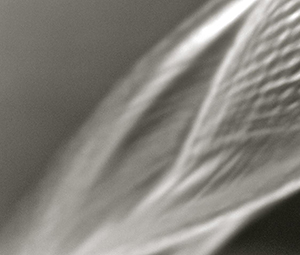 Cedars is the second collaboration to be released between electronic artists Alan F. Jones and Derek Rogers, though unlike the previous Repetend, Parallax (2015), this is a live recording, rather than a studio collaboration. Recorded in May 2017 in Dallas, Texas, the single piece that comprises this album highlights the different, at times contradictory approaches Jones and Rogers have towards art and composition, and the whole performance seems to be defined by these contrasts, yet somehow the overall sound gels together brilliantly.
Cedars is the second collaboration to be released between electronic artists Alan F. Jones and Derek Rogers, though unlike the previous Repetend, Parallax (2015), this is a live recording, rather than a studio collaboration. Recorded in May 2017 in Dallas, Texas, the single piece that comprises this album highlights the different, at times contradictory approaches Jones and Rogers have towards art and composition, and the whole performance seems to be defined by these contrasts, yet somehow the overall sound gels together brilliantly.
The most significant juxtaposition to be heard throughout the performance of Cedars is the disjuncture between some lo-fi elements and its overall more academic sounding instrumentation.The recording, for example, captures some improvised percussion and extremely subtle melodic moments in the opening minutes, but has a raw, room-like ambience that adds to the sense of being there as it was recorded, and not a pristine digital facsimile.Later on subtly treated modular synthesizer passages (or something extremely similar) that sound like the product of deliberate and painstaking shaping and adjustment are interrupted by a random cough from either a performer or an audience member.
Later on what begins as a distorted, bitcrushed synthesizer sounding passage evolves into a xylophone-like melody, all the while the enveloping sound is somewhere between lush musical ambience and low fidelity incidental detritus.Then, in true free improvisation fashion, one of the pair begins to jingle coins and drop them onto a hard, microphoned surface.It is this sort of blend of high art sound design and impulsive improvisation that makes this disc stand out radiantly.
It is hard to determine what of these bits are Jones (who tends to be more of a live performer and collaborator with others) or Rogers (who’s work I am more familiar with, but tends to be a solo artist who runs the gamut from beautiful drones to harsh noise), but the two working together makes for an exceptional, unified album.The conflicting approaches continue throughout the piece, with rattling coins accompanying massive swells of electronics that resemble passing airplanes.
Besides this blend of different sounds and approaches to the performance, another highpoint of Cedars is simply how dynamic the piece is, beginning to end.Rogers and Jones mix a bit of everything in, from recorded piano and acoustic guitar to random found sounds and carefully modulated feedback and distortion.Different components are introduced, allowed to breathe and develop, but are then retired before stagnating and replaced with new ones, keeping a consistent current from beginning to end.
Cedars is at times a challenging work, but in the best possible way.The differences that appear between the more proper, structured electronics and the incidental, free improv additions are great, but so is the overall presentation.With Jones handling the mastering and final production, there is an superb feel of both the true nature of the performance being captured, but also the feel of being on location as it happened.Having seen many a show like this in similarly strange locations (this one being in the listening room of the Full City Roosters coffee roasters and café), there really is the feel of being there in the moment as it happened.Also it must be acknowledged that I am happy to see Rob Forman’s always impressive and amazing Sedimental label back at it again with yet another tremendous release.
samples:
 
Read More
- Administrator
- Albums and Singles
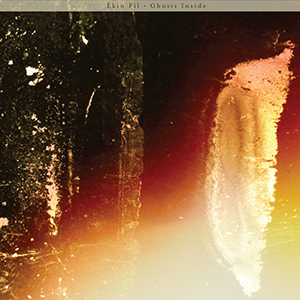 The Turkish artist Ekin Fil (also known as Ekin Üzeltüzenci) follows up her excellent 2016 LP Being Near (also available on Helen Scarsdale) with two distinctly different, yet both exceptional new releases. The reasons for these differences are obvious, with one being a conventional album and the other a film score, but each also cast a focus on different aspects to her work, with the former emphasizing her unique pop sensibilities within a traditional song framework, while the latter her approach to electronics and production.
The Turkish artist Ekin Fil (also known as Ekin Üzeltüzenci) follows up her excellent 2016 LP Being Near (also available on Helen Scarsdale) with two distinctly different, yet both exceptional new releases. The reasons for these differences are obvious, with one being a conventional album and the other a film score, but each also cast a focus on different aspects to her work, with the former emphasizing her unique pop sensibilities within a traditional song framework, while the latter her approach to electronics and production.
Ghosts Inside is the more traditional LP of these two releases, and most in-line with Being Near. It is a suite of 11 songs, most of which heavily feature electronics, deeply treated guitar, and her distinct vocals to superb effect.Opening song "Let Go" is rather indicative of much of this album from its start:sparse piano lingering under heavy reverb, casting a rather bleak shadow, as her breathy vocals rise from the darkness like a spirit.Around this she creates a space of abstract, textural electronics that give the otherwise conventional arrangement an additional layer of distinct depth.
For "Simple Past" she employs a similar approach:depressive, minor key piano coupled with distant vocals that are largely obscured, but all the while the piece is wrapped in an excellent sense of mood and ambience."Final Cut" is comparable, although the vocals are sparser and there is greater use of static-like textures to the mix.The emphasis shifts to electronics on "Before a Full Moon" and, paired with the beautiful vocals, the piece drifts into heavier and gloomier territories, underscored by churning pseudo-bass rhythms.
Üzeltüzenci’s use of field recordings in "Episodes" also adds a nice dimension, giving a bit of familiar feel to the pulsating keyboards and low end rumble that sounds more like an alien pop song than anything else.While there does seem to be a recurrent shadowy intimacy to Ghosts Inside, it is not that monochromatic.The electronics on "Fin" have an ethereal lightness to them that, when blended with less decipherable recordings and crumbling electronics, ends up resulting in a lighter, though not necessarily jovial mood.Skittering electronics and well-utilized delays push "Like A Child" into a more rhythmic place that is further refined by her light, delicate vocal performance.
samples:
 
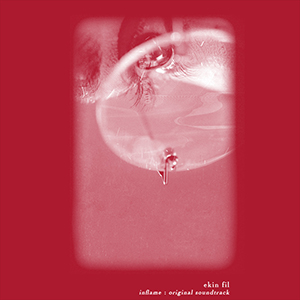 The other new release, the cassette Inflame, is Ekin Fil’s soundtrack to the Ceylan Özgün Özçelik film of the same name.Here her electronic and production work takes the forefront via a set of 19 short interludes and film cues that emphasize her synth and sound design work over her vocal and traditional songwriting that defined Ghosts Inside.Because of this, it may not work quite as well as that record does in a traditional sense, but there is a lot of brilliance here as well.Some of these miniatures are not that far removed from her other album work, barring the lack of vocals."The 360∞ (Opening Credits)" and "The Verdict" both heavily showcase rhythmic synth sequences and an understated complexity, with even some percussion in the latter.
The other new release, the cassette Inflame, is Ekin Fil’s soundtrack to the Ceylan Özgün Özçelik film of the same name.Here her electronic and production work takes the forefront via a set of 19 short interludes and film cues that emphasize her synth and sound design work over her vocal and traditional songwriting that defined Ghosts Inside.Because of this, it may not work quite as well as that record does in a traditional sense, but there is a lot of brilliance here as well.Some of these miniatures are not that far removed from her other album work, barring the lack of vocals."The 360∞ (Opening Credits)" and "The Verdict" both heavily showcase rhythmic synth sequences and an understated complexity, with even some percussion in the latter.
Ekin Fil’s occasional implementation of drum sounds is also a distinct facet of Inflame, such as in their big, echoing form that contrasts the droning electronics on "Another Past" nicely balancing the two disparate types of sounds.The rhythmic sounds also appear on some of the less musical pieces as well:"Edit History" is all drums and massive subbass, but as a whole it feels more like sound effects than what I would normally consider music.For "Hasret" she utilizes a nice palette of glitch effects, white noise, and arpeggiated synths that build to a more chaotic, dissonant ending, melding the worlds of noise and music.The opening moments of "Delete History" are straight up harsh electronics, but eventually become reshaped into lush, multilayered tonal drones.
It is difficult to pick a preference between Ghosts Inside and Inflame.At times I felt some of the songs on Ghosts Inside were a bit too similar to one another which, given their relatively short durations and other, more varied pieces, is not that much of a detriment.On Inflame, there were some of the pieces that I wish stretched on for many more minutes, but with most of the durations hovering around a minute or two, simply came and went too quickly.These limitations do not negatively impact either album, however, and both are exceptionally executed records that continue to display Ekin Fil’s beautiful approach music.With Ghosts Inside covering the songwriter and Inflame the sound design and electronic facets of her sound, both are distinctly different yet complement each other perfectly.
samples:
 
Read More
- Administrator
- Albums and Singles
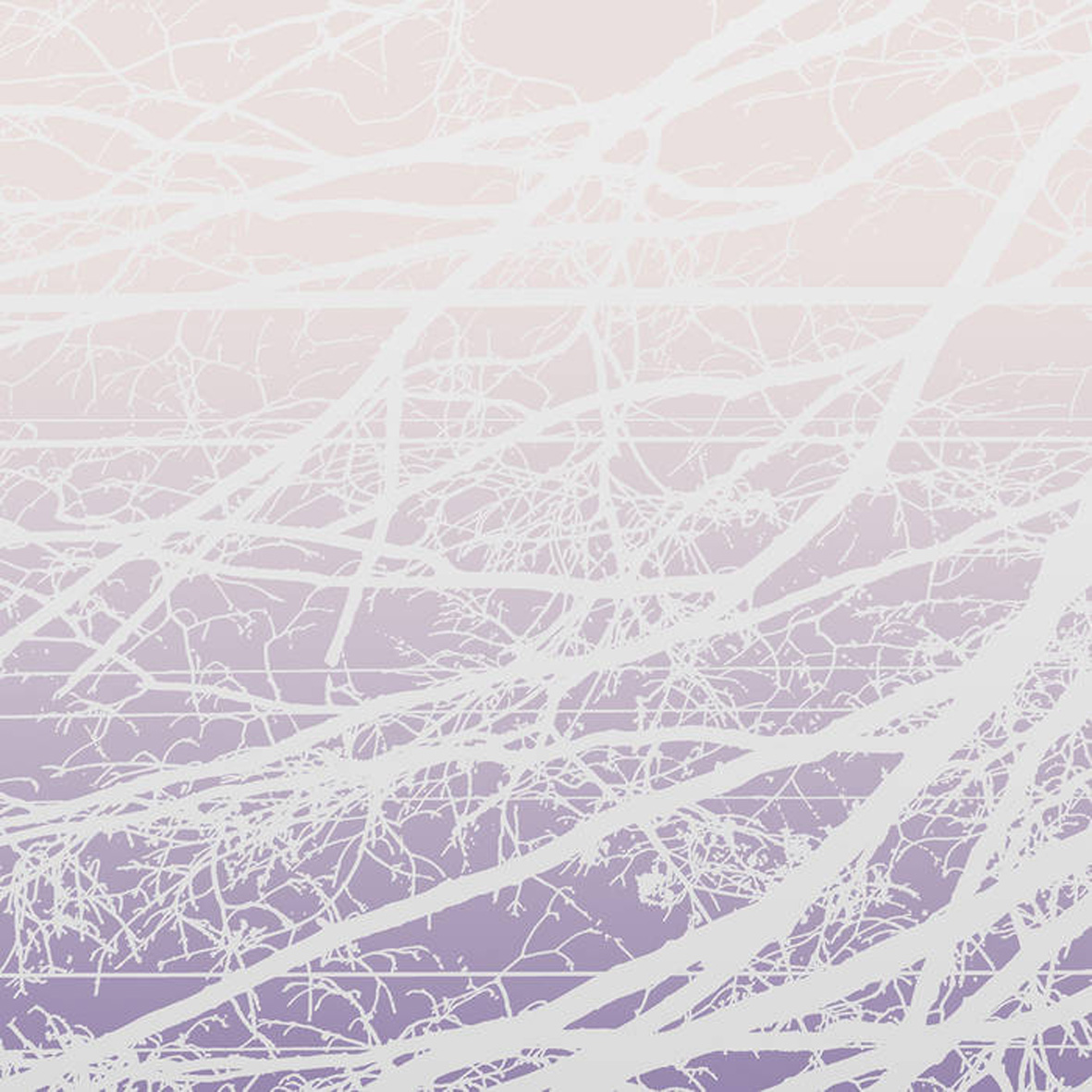
My first exposure to this NYC-based alto saxophonist/composer’s work was last year's excellent All That is Solid Melts Into Air cassette, which featured some wonderfully snarling and churning double-bass drones. For her follow-up, Bertucci returns to NNA Tapes for a full-length LP sans string ensemble, focusing instead on her own solo performances. Naturally, her saxophone plays a large role, particularly in the fluttering and reverberant minimalism of the opening piece, but Bertucci also has a deep fondness for tapes and field recordings, resulting in an unusual and absorbing mélange of saxophone squalls, bloodcurdling squeals, simmering reveries of uncomfortably dissonant drones, and languorously dreamlike soundscapes.
Despite being one of the shorter pieces on the album, the opening "Patterns For Alto" is perhaps the most striking and effective distillation of Bertucci's distinctive artistry, marrying the trance-like repetition of early Terry Riley with Pauline Oliveros's groundbreaking work in harnessing the natural reverb of unusual architectural environments.More specifically, Bertucci unleashes a rapid-fire cascade of trilling saxophone patterns in a cavernous space, deftly using the enhanced reverb to weave an undulating web of squirming notes and ghostly overtones.It feels a lot like an eerily pretty swarm of lysergic bees.Curiously, Bertucci does not return to similar territory at all with the remaining three songs, but I suppose that makes sense given that her definitive statement in that vein only needed to be made once.The longer "Accumulations" is still saxophone-based, however, albeit in a completely different direction (or at least a completely different time scale). It deceptively opens as a slow, billowing fog of sinister harmonies, but that early dissonance quickly gives way to a languorous and lyrical saxophone melody.That motif too proves to be a bit of a feint, as the piece ultimately transforms into something in between those two poles: a murky and uncomfortably dissonant swirl of gauzy, layered harmonies mingled with viscerally harsh squeals that resemble the death throes of a free-jazz freak-out.It is quite a challenging piece, as it is not particularly easy on the ears, but it is also quite a fascinating and bracingly violent one that takes some unusual twists.The final moments are especially unexpected, resembling a sax and heavy electronic noise duo performing at a placid beach surrounded by birds.
Bertucci's sax does not play much of a recognizable role in the album's second half, aside from being the source of the early blurry and smeared drones in the epic "Sustain and Dissolve."While nerve-fraying dissonance continues to be the water in which Bertucci swims, "Sustain" is a bit more understated and nuanced than its predecessors, resembling a lovely drone piece that is constantly slipping out of focus to produce curdling and unnerving overtones.Unexpectedly, however, that motif eventually "dissolves" into a strange coda of hollow metallic pulses and distressed-sounding field recordings that evoke a deeply hallucinatory afternoon at the oceanside.Curiously, the brief closer "At Dawn" is almost a complete reprise of that coda, but re-envisioned as a lonelier and more warmly beautiful experience, transformed into a fond and bittersweet memory that mostly edits out the presence of all the other humans.It is actually my favorite piece on the album, which I feel a little guilty about, given that it lacks the sharp edges found elsewhere on Metal Aether: it is just simple, perfect, and nakedly lovely.
It is very hard not to love an album that contains four strong, compelling, and distinctive artistic statements in a row, so my only real caveat with Metal Aether is that the degree of dissonance can be "difficult" at times.It is crucial part of Bertucci's aesthetic, however, as the most consistent thread that runs throughout her work is a genius for subtly accumulating and resolving tension.One more item of note is that this album sometimes feels more like a compilation than a coherent, intentional whole, which I suppose it is, as it spans work across three years and two continents.I am the absolute last person who would attempt to stop someone from releasing a uniformly excellent album that does not quite fit together seamlessly, yet it bears mentioning that "Patterns For Alto" and "At Dawn" sound like the work of two completely different artists.As such, I would be very hard-pressed to succinctly describe Bertucci's overarching vision.However, she definitely has one, as Metal Aether never feels derivative or particularly indebted to other artists: inspiration may came from different places, yet the end results are always triumphantly Bertuccian.I will definitely want to hear whatever she records next, even if I have absolutely no idea quite what direction it may take.In any case, this is a great album.I suspect that the sustained and roiling sax eruption of "Patterns for Alto" will be the piece that gets all the initial attention, but anyone who takes a deeper plunge will likely find that there are plenty of other highlights that just take slightly longer to reveal themselves.
 
Read More
- Administrator
- Albums and Singles
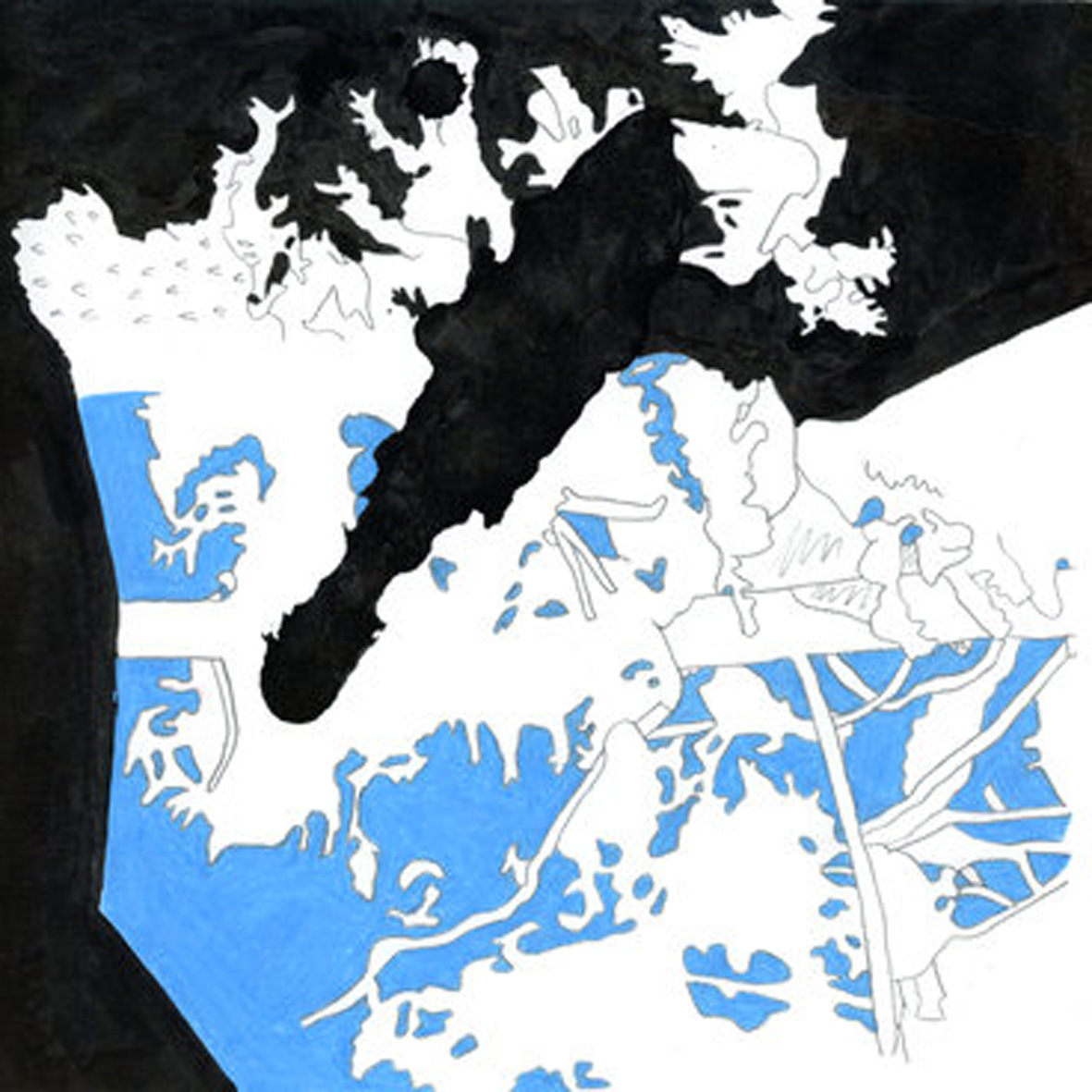 Remarkably, this is Silvia Kastel's first solo full-length album, which is an improbably late milestone given that she has been prolifically releasing a steady flow of unusual and inventive tapes and collaborations for almost a decade. Her aesthetic over the years has been quite a chameleonic and unpredictably evolving one, blithely delving into noise, no wave, sound art, modular synthesizer experiments, and a genre-blurring array of other excursions. Characteristically, Air Lows is similarly hard to categorize, but its shadowy, deconstructionist vignettes are certainly a good fit for Blackest Ever Black, evoking the feel of a sleepwalker slowly making their way through an abandoned landscape of urban decay. Some of these pieces are admittedly more fully formed than others, making for a bit of an exasperating whole at times, but the stronger moments definitely have a darkly languorous allure.
Remarkably, this is Silvia Kastel's first solo full-length album, which is an improbably late milestone given that she has been prolifically releasing a steady flow of unusual and inventive tapes and collaborations for almost a decade. Her aesthetic over the years has been quite a chameleonic and unpredictably evolving one, blithely delving into noise, no wave, sound art, modular synthesizer experiments, and a genre-blurring array of other excursions. Characteristically, Air Lows is similarly hard to categorize, but its shadowy, deconstructionist vignettes are certainly a good fit for Blackest Ever Black, evoking the feel of a sleepwalker slowly making their way through an abandoned landscape of urban decay. Some of these pieces are admittedly more fully formed than others, making for a bit of an exasperating whole at times, but the stronger moments definitely have a darkly languorous allure.
Blackest Ever Black had some intriguing and unusual things to say about Air Lows, describing it as a "reverse Wizard of Oz" and mentioning that one of its primary inspirations was avant-garde fashion.The former refers to the mood shift that unfolds over the course of the album, gradually moving from brighter, livelier fare towards something considerably more stark and haunted.Even the early pieces have a fragmented, disorienting, and broken feel, however, and most of the more appealingly hooky moments perversely occur during the darker half. The fashion influence is also quite interesting, though it seems very easy to read far more into it than was intended.As far as I can tell, the main impact from that is that these eight songs often take shapes that are bold and inventive, yet not necessarily functional.A prime example of Kastel’s complicated vision is "Bruell," which opens as a jabbering cacophony of discordantly metallic synths, stuttering drums, and gurgling bass gargles before unexpectedly dissolving into an eerily beautiful, slinky, and neon-lit groove for a fleeting moment.As a whole, it is a weirdly fascinating piece that seems to follow a bizarre and fractured dream-logic, but I cannot help but feel a little frustrated that the seeds of a much better and more coherent song are present as a mere ephemeral and quickly discarded interlude.In fact, I think that piece succinctly illustrates what drives me a little crazy about this album: Kastel seems able to casually toss off snatches of gorgeous or vampirically sexy music, yet that never seems to be her ultimate objective.Instead, those moments of beauty are just something to fleetingly glimpse in Kastel's enigmatic and bizarre hall of mirrors.
While I can appreciate Kastel's challenging and fluid approach to structure on an intellectual level, the pieces that follow a more linear and conventionally structured path understandably tend to be the more satisfying ones.The most impressive example of that trajectory is "Heart 2 Tape," which marries a murkily throbbing pulse with a gauzy swirl of angelic vocals.Kastel strikes a perfect balance between swooning beauty and a lurching, noise-damaged undercurrent, then makes it even better with a hallucinatory haze of muted bloops and an obsessively looping synth melody.While it is essentially just a 4-minute vamp on a very cool theme, it transcends its seemingly simple components to feel like an especially novel and aberrant twist on dub.On a related note, almost all of the pieces where Kastel sings tend to rank among the album's highlights, as her alternately sensuous and somnambulant vocals are a necessary and effective counterbalance to the oft murky and vaporous music.Elsewhere, "Spiderwebs" offers an especially bloodless twist on the downcast, skeletal pop of label mate Carla dal Forno, as it sounds like Kastel is both in a trance and trapped at the bottom of a well, damned to sing the same cryptic refrain forever."The Closer The Stranger" is yet another memorable piece, resembling a sultry club jam that has been dissolved into a slowly creeping fog.Much like the groove in "Bruell," the isolated and decontextualized song fragments that flow through "Closer" offer strong evidence of a genuine talent for hooks that is continually being subverted and disrupted.
The remainder of Air Lows is a bit of curious mixed bag that mostly feels like a series of surreal interludes bridging together the more substantial pieces.The one exception is the vocal-less "Air Mob," which sounds like a dub groove that has been completely eviscerated to leave only a slowly shuffling beat and a shivering haze of drones and feedback.I rather like it, but I am not sure it quite makes the leap from "cool idea" to "song."I suppose that is the central caveat with Air Lows, as it seems like Kastel's aesthetic is quite a willfully perverse and elusive one, sabotaging and deconstructing most of her strongest and most instantly gratifying ideas to craft something disconcertingly indistinct, ephemeral, and shadowy.I can certainly appreciate that objective, but Air Lows errs on the side of diluting Kastel's best material a little too much for my liking–this feels a bit like an overstretched EP. That said, the results are quite impressive when she hits the mark and she hits it several times.Also, Kastel has carved out quite a singular aesthetic niche with this album, as it legitimately sounds like it was recorded by an actual vampire (or at least a partially drained victim in the thrall of one).Anyone can dress up in black and wallow in deep melancholy, but Air Lows evokes the profound loneliness and existential dread of being alone on a subway platform in an unfamiliar and vaguely threatening city at 4am.
 
Read More
- Administrator
- Albums and Singles
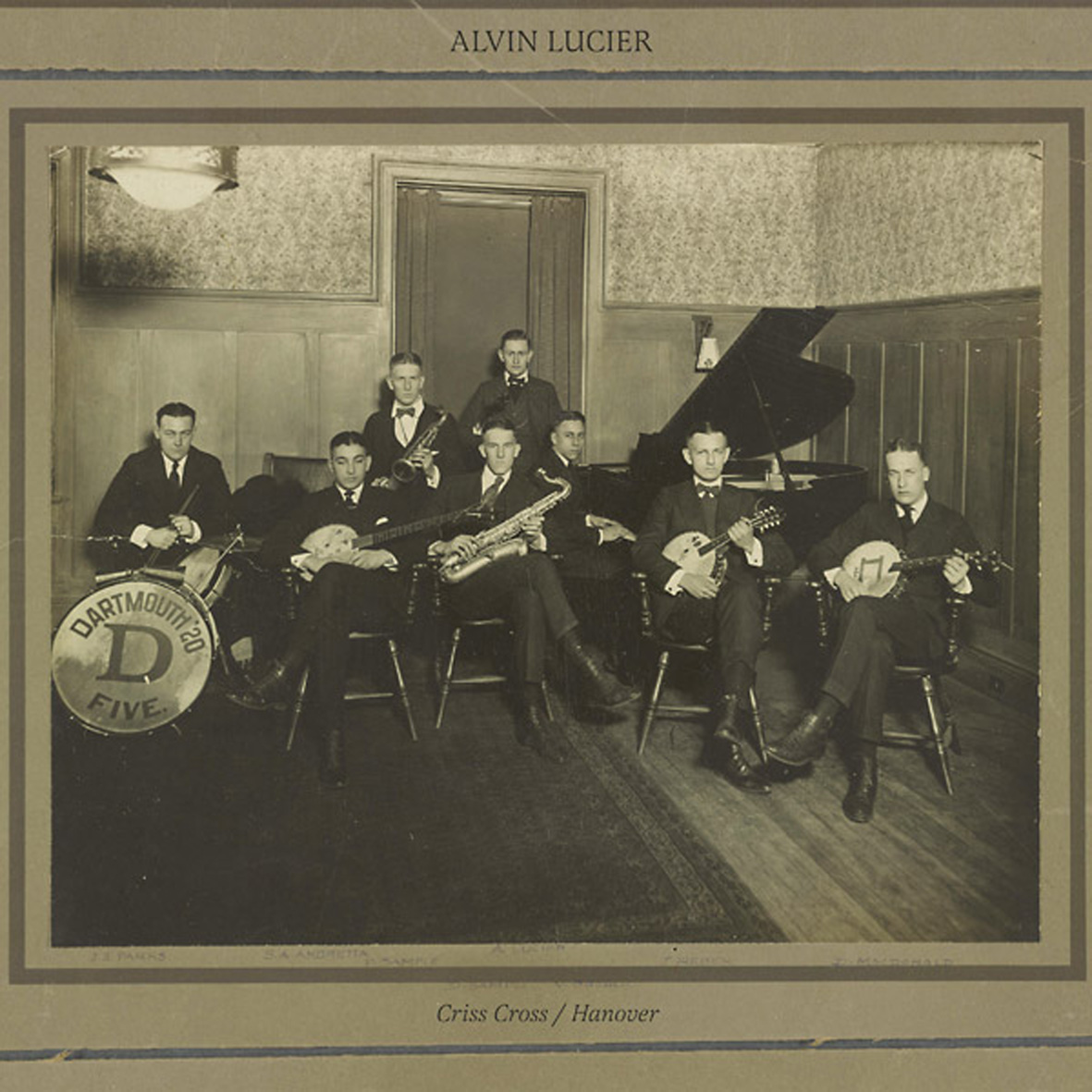 Now in his late 80s, Alvin Lucier has had a long career of radical compositions that explore phase interference, the resonance of spaces, and deeply unconventional sound sources. Although his output has certainly slowed in recent years, he remains as idiosyncratic and experimental as ever, recently becoming interested in unexplored possibilities for the electric guitar. The first half of this album is just such a piece, as "Criss Cross" was composed in 2013 for Stephen O'Malley and Oren Ambarchi (who perform it here). O'Malley and Ambarchi return for "Hanover" as well, albeit as part of an ensemble that roughly mirrors the 1918 Dartmouth Jazz Band pictured on the album cover (Lucier's father was the violinist). Needless to say, nothing on this album sounds even remotely like guitar music, though "Criss Cross" is not a dramatic departure from some of Lucier's previous work with competing phases. The nightmarishly spectral chamber music of "Hanover," on the other hand, is quite a large (and harrowing) surprise.
Now in his late 80s, Alvin Lucier has had a long career of radical compositions that explore phase interference, the resonance of spaces, and deeply unconventional sound sources. Although his output has certainly slowed in recent years, he remains as idiosyncratic and experimental as ever, recently becoming interested in unexplored possibilities for the electric guitar. The first half of this album is just such a piece, as "Criss Cross" was composed in 2013 for Stephen O'Malley and Oren Ambarchi (who perform it here). O'Malley and Ambarchi return for "Hanover" as well, albeit as part of an ensemble that roughly mirrors the 1918 Dartmouth Jazz Band pictured on the album cover (Lucier's father was the violinist). Needless to say, nothing on this album sounds even remotely like guitar music, though "Criss Cross" is not a dramatic departure from some of Lucier's previous work with competing phases. The nightmarishly spectral chamber music of "Hanover," on the other hand, is quite a large (and harrowing) surprise.
The prosaically titled "Criss Cross" is the first piece that Lucier ever composed for guitar and it has a very simple and aggressively minimalist premise: wielding E-bows, O'Malley and Ambarchi start at opposite ends of a semitone, then each of them slowly slides to the other end (and then back again…and again…and again).Thankfully, the chosen range falls in the lower frequency range, so the uncomfortably close harmonies that arise do not sound shrill at all.Instead, their proximity merely creates an oscillating pulse that speeds up or slows down depending on how close the two guitarists are to the same pitch.That steady, slow-motion see-sawing continues for roughly 16-minutes and it is the entirety of the piece.As such, its appeal is primarily conceptual, as it basically sounds like a droning thrum created by a wave generator of some kind, albeit with the length of the waves constantly shifting incrementally.Stylistically, it closely resembles some of Eliane Radigue's more purist drone work, though Lucier is perhaps even more austere.As such, the process itself is largely the appeal, as I never would have suspected that any guitars were involved at all if I did not know anything about the piece's background or its participants.
Though it is a considerably more "difficult" listening experience than the comparatively placid "Criss Cross," "Hanover" strikes a far more powerful and absorbing balance of concept and composition.Knowing its inspiration, it is also kind of a blackly funny piece, as few things could possibly swing less or clear a dance floor faster than Lucier's hazy miasma of queasy glissandi and uncomfortable, sickly harmonies.Ambarchi and O'Malley are additionally joined by a third guitarist (Gary Schmalzl), as Lucier replaced the banjos in the picture with guitars, but I am not sure it makes all that much difference who is involved, as any character or real distinction between the various musicians is essentially blurred into oblivion.Occasionally a single clear piano note will ring out, but the violin, saxophones. and guitars all smear and swirl together in a quivering haze.The best description of the piece that I can muster is that it feels like the hapless 1918 Dartmouth Jazz Band checked their tuning before launching into their set...only to have time immediately stop.Instead of their various notes ending naturally, however, all of the various pitches instead began to nightmarishly slide around in a kind of grotesque, slow-motion dance while they all watched in frozen horror.Naturally, I am exactly the target audience for something like that: "Hanover" is a wonderfully ugly and sinister fog of glacially evolving dissonance and tension.
I was not at all sure what to expect from this album, as I was a bit apprehensive about the idea of Lucier composing for guitars, particularly since O'Malley’s involvement suggested that some kind of awkward doom metal/conceptual sound art mash-up might result (both artists have strong and divergent signature aesthetics).Also, while Lucier never stopped working, it has been quite a while since he unleashed a provocative new major opus, so I had no idea where he currently was aesthetically.As it turns out, all of my concerns were happily unfounded, as Lucier has clearly not mellowed at all, nor did he allow Ambarchi and O'Malley's own aesthetics to hold much sway over his vision.This is pure, undiluted Lucier.In fact, this release not only befits his well-earned reputation as a restlessly inventive iconoclast, it actually bolsters it further.If this pair of new works has any flaw at all, it is merely that "Criss Cross" is essentially an interesting new way to revisit old territory rather than a complete leap into the unknown."Hanover," on the other hand, is a legitimate bombshell, viscerally illustrating that Lucier still has an impishly heretical approach to modern composition and that it has some very sharp teeth.
 
Read More
- Administrator
- Albums and Singles

Once you'll touch the sky you will never return to dust is a new 1-hour long instantaneous composition performed with a prepared mini-keyboard, a handmade shortwave receiver and Roberto Opalio’s patented alientronics and wordless vocalizations. It is a masterpiece of modern minimalism, an ecstatic voyage where time and space lose their meaning, thus glorifying the poetic lyricism of the "here and now," that "eternal now" that other visionary artists and vanguards of the past have always dealt with, from Friedrich Nietzsche to Muhal Richard Abrams. "Towards the Sun," headed Arthur Rimbaud. "Space Is The Place," asserted Sun Ra.
Out March 7th on Elliptical Noise.
Read More
- Administrator
- Albums and Singles

Eliane Tapes is a new series on Moving Furniture Records. All the music in this series is dedicated and/or inspired by the works of Éliane Radigue.
With her groundbreaking work already in the late '60s and early '70s Éliane Radigue created a path for many other musicians in the field of minimalism and drone music.
To celebrate the amazing work she has done (and still does), we ask musicians to create works that are inspired by her work and as such are a dedication to her.
The first release for Eliane Tapes is by Kassel Jaeger.
For Retroactions, Kassel Jaeger created "studies" trying to extend the gesture Éliane Radigue did with feedbacks, with a different and more "hi-fi" setup than the one she used at the time.
In 4 studies, he experiments with different feedback setups: controlled, non-controlled, processed and non-processed. He worked with 6 microphones and 10 speakers, feedbacks.
Out February 19th on Moving Furniture.
Read More
- Administrator
- Albums and Singles

The Sky With Broken Arms is a further step ahead into the realm of the unknown, where the music made of minimal, dreamy guitar chords and eerie wordless vocals over a dense layer of crackling noise comes out of a strong conceptual idea.
As Roberto Opalio’s foreword to the work reads "On a winter day two years ago, I found out that an entire section of my vinyl collection was completely ruined by an inexplicable oxidation process. [..] As a first reaction, I decided not to play those records ever again... and that I did, for a long time. 'Til one night, exhausted, I felt the absolute urgency to listen to one of those LPs whose musical content got buried by the vinyl surface noise. In that moment, the shocking epiphany: [..] slowly, I began to perceive that not only were the old, beloved sounds that I was used to still there, but the layer of ground noise obliged me to even more attentive and active listening; thus I was discovering very subtle sound details now claiming their own being and pretending their own space. The idea of a new MCIAA album came out of this enlightenment. A new concept concerning the representation of music on the one hand and its perception on the other. A music so essential and precious as to be discovered by the listener little by little, because hidden by a blanket of crackling noise, which I obtained from the blank grooves of my damaged vinyls. Thus, here we are: infinite spaces of disintegration and psycho-existential ecstasy… essentially, spaces of non-limited, non-stoppable Poetry."
Out March 7th on Elliptical Noise.
Read More

